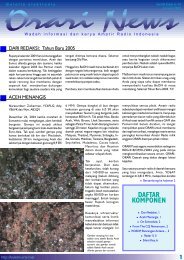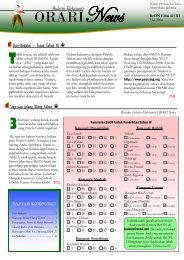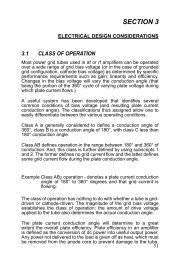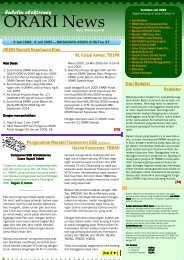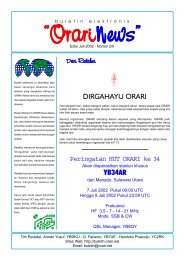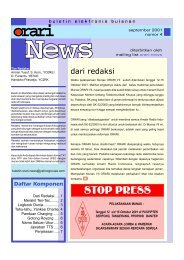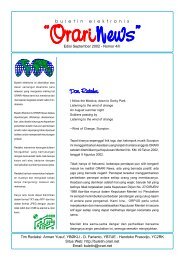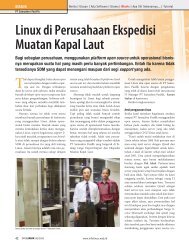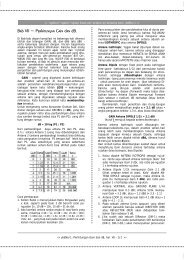The refstyle package - FTP
The refstyle package - FTP
The refstyle package - FTP
Create successful ePaper yourself
Turn your PDF publications into a flip-book with our unique Google optimized e-Paper software.
\DeclareLangOpt<br />
If, for example, an external document defined with 〈xr key〉={A-}, uses an identical<br />
setup (e.g. the same <strong>refstyle</strong>.cfg), then it can be referenced with<br />
or otherwise<br />
\tabref[xr=A-]{abc} → table~\ref{A-tab:abc}<br />
\tabref[xr=A-,key=]{abc} → table~\ref{A-abc}<br />
4.5 Language parameters: name, names, Name, Names, rngtxt,<br />
lsttwotxt, lsttxt<br />
This key-values contain the text prefixes and insertions. Every house style or user<br />
has his or her own preference for naming the reference types, therefore are there<br />
no defaults provided.<br />
name — Inside sentence reference prefix (singular) default={}<br />
names — Inside sentence reference prefix (plural) default={}<br />
Name — First word reference prefix (singular) default={}<br />
Names — First word reference prefix (plural) default={}<br />
rngtxt — Range of references default={\ to~}<br />
lsttwotxt— List of references (two) default={\ and~}<br />
lsttxt — List of references (more than two) default={\ and~}<br />
Good typographic style manuals recommend the minimum use of capital letters<br />
and punctuation that breaks the flow of a sentence or paragraph. For abbreviations,<br />
Bringhurst[1] recommends the Oxford house style: Use a period only when<br />
the word stops prematurely. <strong>The</strong> period is omitted if the abbreviation begins with<br />
the first letter and end with the last. As an example for equations, use eq. (1)<br />
or eqn (1). A good guideline is not to abbreviate any reference type names. If<br />
a sentence starts with a reference then the type name must always be written in<br />
full. A typical example for references to a table is:<br />
name ={table~}, names ={tables~},<br />
Name ={Table~}, Names ={Tables~},<br />
rngtxt={\ to~}, lsttxt={, and~}, lsttwotxt={\ and~},<br />
Note the hardspace after the text. It is needed to keep the text and the reference<br />
together on the same line.<br />
<strong>The</strong> <strong>refstyle</strong> configuration file can be setup to interface with babel for different<br />
languages or for automatic language changes inside a document. <strong>The</strong> language<br />
specific key-values can be added to the babel hook \extras〈language〉. <strong>The</strong> com-<br />
mand \DeclareLangOpt 3 is provided to supply a 〈language〉 option to the <strong>package</strong><br />
and to add the option contents to \extras〈language〉. <strong>The</strong> default config file contains<br />
the following lines for equations:<br />
\newcommand\RSenglish{%<br />
\def\RSeqtxt{equation~}%<br />
\def\RSeqstxt{equations~}%<br />
\def\RSEqtxt{Equation~}%<br />
\def\RSEqstxt{Equations~}%<br />
:<br />
}<br />
\DeclareLangOpt{english}{\RSenglish}<br />
3 Only for use in <strong>refstyle</strong>.cfg the default config file<br />
10




